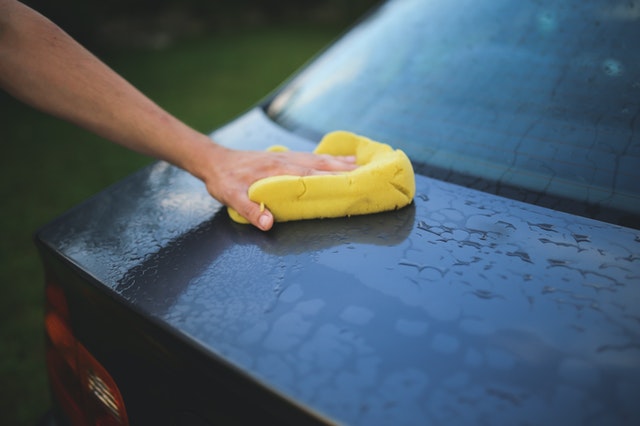
Cleaning your vehicle regularly is an important part of automobile maintenance. Keeping your vehicle free from debris helps protect the paint and finish, allowing it to look new for as long as possible. An important part of the cleaning process is getting the wheels clean. Wheels can accumulate a lot of dirt, grime, and brake dust build-up, which can end up hurting the finish and causing permanent damage. Cleaning the wheels properly involves several steps, and taking any shortcuts or missteps can make it less effective. Some of the common mistakes to avoid as you clean your wheels include the following:
1. Washing the body of the vehicle first.
A mistake that many people make when it comes to washing wheels is doing it last. You should always clean the wheels before you tackle the body of the car. The wheels are the dirtiest part of the vehicle simply because of their proximity to the road. Plus, this is the part of the vehicle most exposed to brake dust, which can cause corrosion. If you wash the wheels last, a lot of the dirt, grime, and brake dust you clean off them will splash onto the paint, which can damage the finish. Washing the wheels first ensures that any of this splatter gets cleaned from the body once you move onto the painted parts.
2. Using dish soap or acidic cleaners.
Automotive stores carry a wide range of cleaners for wheels. As you sort through the different products, pay close attention to the labels and avoid acidic cleaners. While they will remove brake dust from the wheels, they will also strip the clear coat, which offers your wheels an important layer of protection. Furthermore, the clear coat makes the wheels look shiny and new, which is why you should protect it.
Look for a cleaner that is pH neutral. Also, you should avoid dish soap, which is a great degreaser but does not tackle many of the other contaminants on wheels. Furthermore, grease is not usually a big issue on wheels.
3. Scrubbing the cavities with a toothbrush.
Many people use a toothbrush to get into the smaller cavities in wheels. However, this is not the best tool. Toothbrush bristles are short and stiff, which limits how well they can break up the grime. In addition, the surface of the wheel rim is large, so you will spend a lot of time scrubbing if you use a toothbrush. Instead, purchase a brush with nonabrasive bristles made for cleaning wheels. These brushes are inexpensive and will save you a lot of time, plus they clean much more effectively. Brushing is an important part of the cleaning process, so don’t avoid it. When you brush, you should focus heavily on the lug nuts as brake dust tends to get stuck in the crevices around them.
4. Cleaning all the wheels at the same time.
You may be tempted to wash all four wheels at once, moving from wheel to wheel during each stage of the cleaning, polishing, and drying process. However, this will not save you time and could end up hurting the wheels. You want to avoid letting water, soap, and other chemicals dry on the wheels as you take turns washing each one; doing this can leave a residue or make lines that can be difficult to clear. Focus on completing one wheel at a time and make sure it is completely dry before you move on to the next. In the end, this is a more focused use of time and will make the process go by faster.
5. Drying with the wrong type of material.
There are several different materials to help dry your vehicle as you wash it. However, pay close attention to what you use for different surfaces. As you wash your wheels, you should dry them to avoid watermarks that can ruin the clean appearance. For wheels, a microfiber cloth is the best material to use for drying. This material will absorb water without scratching the coat or leaving other marks. A chamois is too smooth and will smear the water around rather than absorbing it. Plus, you may end up rubbing dirt into the clear coat. Bath towels and paper towels are absorbent but can cause scratches.
6. Neglecting the fender and wheel wells.
A key part of cleaning your wheels is making sure that you get the dirt and grime out of the fender and wheel wells. Mud gets kicked up into these areas, which can also collect salt, pebbles, and more. While these messes are hidden, they can cause corrosion or simply make your wheels dirtier as the grime falls from the wells. Tackle these areas with an all-purpose cleaner, since you do not have to be as worried about scratches on these hidden areas. Spray the well and get into the areas with a stiff-bristled brush to get the dirt out as effectively as possible. You should have a separate brush for this task.